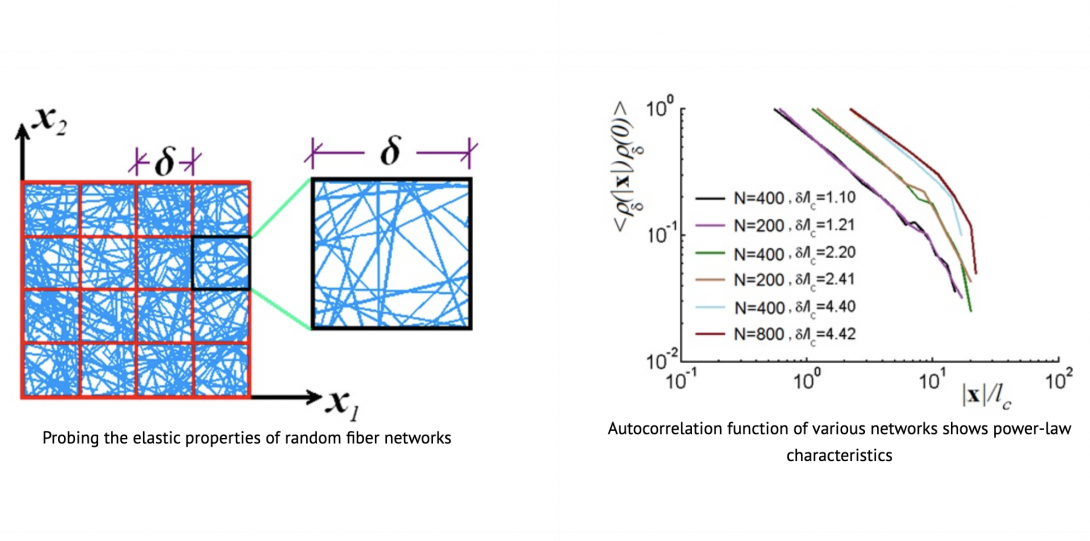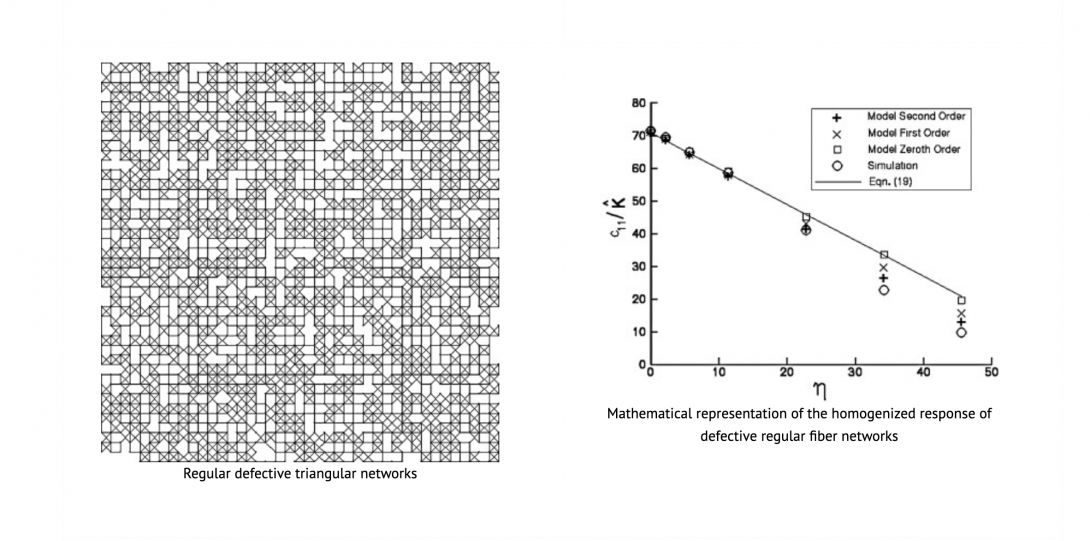Mechanics of Random Media
Mechanics of Random Media
In this area of research, we investigate microstructural and mechanical properties of materials composed of randomly cross-linked fibers in order to determine the underlying physical mechanisms governing their mechanics. These materials are ubiquitous, appear as biological and structural materials, and have distinctive features such as high specific stiffness and adjustable mechanical properties.
Random fibrous networks form the microstructure of both biological and non-biological materials such as the cytoskeleton, cellulose materials, and soft collagenous tissues. For example, cytoskeleton is a cross-linked protein filamentous structure which provides structural integrity to the cell. Similarly, the extracellular matrix of soft tissues is composed of a network of filamentous proteins which significantly contributes to their mechanical properties. In the non-living world, paper and cloth are the ubiquitous examples of fiber-based materials. Despite significant research, the structure-function relation of randomly cross-linked fibrous materials is not yet clearly understood.
We have shown that random fiber networks are stochastic fractal objects from a mechanics point of view and deform in a manner similar to heterogeneous media with stochastic fractal distribution of moduli. The classical homogenization techniques do not apply to microstructures of this type. Therefore, we have been developing new analytical methods to solve boundary value problems on domains with such microstructures.
We are currently working on developing multiscale models to bridge different length scales and characterize the mechanical behavior of filamentous networks in terms of their microstructural properties


